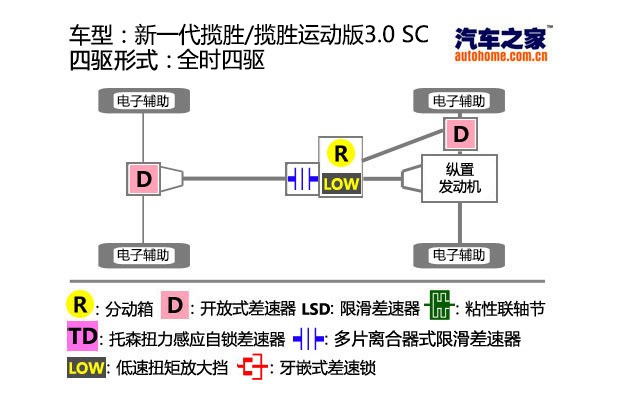Four-wheel drive Land Rover (imported)-Range Rover Sport Edition
● Four-wheel drive structure: basically the same.

As we all know, both Range Rover Sport Edition and Range Rover are equipped with full-time intelligent four-wheel drive system and powerful second-generation all-terrain feedback system. Users only need to choose the corresponding driving mode and control the throttle and direction, and the next difficulties and obstacles will be fully handed over to the vehicle itself to overcome. It’s like a fool’s camera. Even if you don’t know how to take pictures, you can still take wonderful pictures. However, do you know what kind of complicated four-wheel drive structure is hidden under this seemingly stupid operation knob?

"The Range Rover and Range Rover Sport Edition of this test drive all adopt this four-wheel drive structure."
First of all, let’s look at the Range Rover Sport Edition. It can be equipped with two full-time four-wheel drive systems. The central differential with strong off-road capability is a multi-plate clutch structure with low gear. By default, the system distributes the torque evenly in the ratio of 50: 50. According to the change of the combination of multiple clutches, the power distribution of the front and rear axles can be 100% respectively, and the electronic traction control system will also play an auxiliary role. Low gear ensures excellent off-road ability, and can provide 2.93:1 driving force at low gear.

"Range Rover Sport Edition can also be equipped with a four-wheel drive system with single-speed transfer case and +Torsen central differential structure."
The weak four-wheel drive system adopts the structure of Torsen central differential, and there is no low gear. The mass of this system is 18kg lighter than that of the previous system, and the ratio of front and rear torque distribution is 42: 58 by default. The setting slightly biased towards the rear drive aims to improve its driving pleasure. At the same time, in order to ensure off-road performance, according to the different road conditions and grip, Torsen differential can adjust the maximum distribution ratio of front and rear wheels to 62% and 78% respectively. Theoretically, this system is weaker than the first one in four-wheel drive performance.
The Range Rover adopts the first four-wheel drive system, and the two cars we tested this time also use this four-wheel drive system. It is worth mentioning that the above is only the middle part of the whole four-wheel drive system. In fact, in order to further optimize the traction and stability under extreme road conditions, consumers can also choose models with dynamic active rear axle limited slip differential (including Range Rover and Range Rover Sport Edition). The rear axle differential lock will form a powerful four-wheel drive system together with the first four-wheel drive system mentioned above.